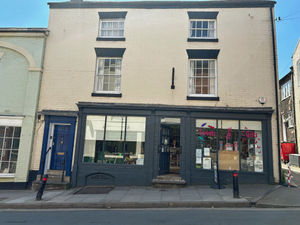Wetherspoons building extension to save its beers from Shrewsbury's floods
A Shrewsbury pub is building an extension so it can keep its precious beer barrels on dry land and out of its flood-prone cellar.
The Shrewsbury Hotel, run by pub giant JD Wetherspoon, sits on an historic town centre site close to Welsh Bridge and suffers when the nearby River Severn invades the area.
Owners at the pub company hope that flood defence work will allow them to keep trading... as long as people can still get in. They are spending £650,000 on the overall project.
It will mean the kitchens will close on November 14 and the pub will close fully from November 21 for work to take place. The pub and kitchen will reopen on Friday December 2.
Wetherspoon spokesman Eddie Gershon said: “In each of the past three years, the cellar at the pub has flooded, which had resulted in the pub having to close while the cellar is drained.
“Wetherspoon is building a new cellar to the rear of the pub, above ground, in space previously used as a small courtyard garden.
“Along with some further flood defence works, the company believes that future floods will not impact the pub, provided that the pub is accessible.
“Wetherspoon will also be carrying out decoration works to the pub interior along with a new carpet and upgraded heating and cooling systems to the customer area and kitchen.
“The project will cost £650,000. This highlights Wetherspoon’s commitment to the pub and Shrewsbury itself.”
Earlier this year the business was granted planning permission to use the tiny beer garden that backs on to Carnarvon Lane for a flat roof designed cooled store, constructed from painted brick. They sent planners a heritage statement about the Grade II Listed site which concluded that it would not harm the area's history and Shropshire Council's experts agreed.
Building work is well underway this week for the development which will cover a total floor area of 53 square metres.
Wetherspoon has not always been successful in gaining planning permission. In 2018 they wanted to extend the property over the adjoining vacant site that had experienced a gas explosion which destroyed a number of buildings in 2010. These plans, in the heart of the Shrewsbury Conservation Area, were withdrawn after failing to be supported by council officers.
Cotswold Archaeology outlined the history of the site, the hotel part of which is an early 19th century building, on the site of an earlier 17th century inn known as The Harp or The Welsh Harp. It was renamed the Britannia Inn and for some time was a coaching inn on the route to Welshpool, Aberystwyth and Barmouth. It was renamed the Shrewsbury Hotel in 1987.
Before then, it was a part of the early medieval settlement of Romaldesham, a district within the Saxon town near a wharf/quay at the end of Mardol, which was later swallowed up by a Shrewsbury that extended out of the loop of the river.
"The settlement was relatively prosperous and in the 16th century is recorded as having six out of the 14 master tanners in Shrewsbury along with many leather workers," said a history assessment.
"A medieval tanning pit is recorded c.86m south-west of the site. Despite the smells associated with the tanning process wealthy families wanted to live there, with evidence of large hall houses being recorded in the area surrounding the site."
It adds that in 1215 Shrewsbury was attacked and taken by Llywelyn ab Lorwerth, which prompted the English King Henry III to allow for taxes to be raised for further fortification of the town.
"This resulted in the creation of a stone town wall, along with some domestic improvements within the town. A defensive ditch appears to have been excavated as close as possible to the outside of the wall for most of its circuit.
"The line of the town’s medieval defences runs through the car park to the north of the building as below-ground remains of the town wall were observed in two locations in this location in the early 20th century."
But an assessment concluded that no significant known archaeological remains have been identified within the site, and there is considered to be a low potential for any significant unknown archaeological remains to survive buried within the site.
"It is anticipated that no significant archaeological remains will therefore be truncated by the proposed development," they said.
In 2010 a gas explosion caused huge amounts of damage to properties close to the site which were later demolished.





